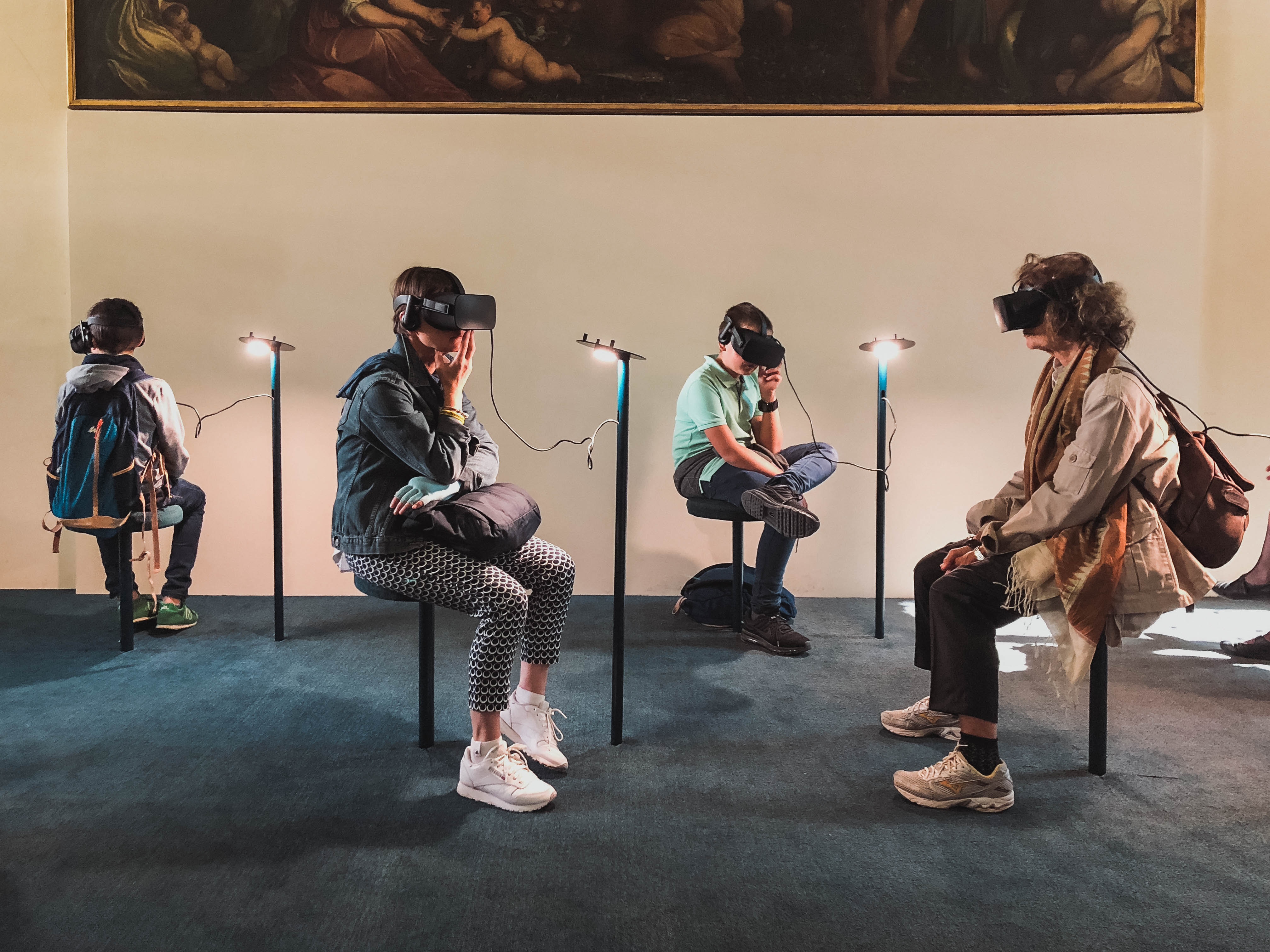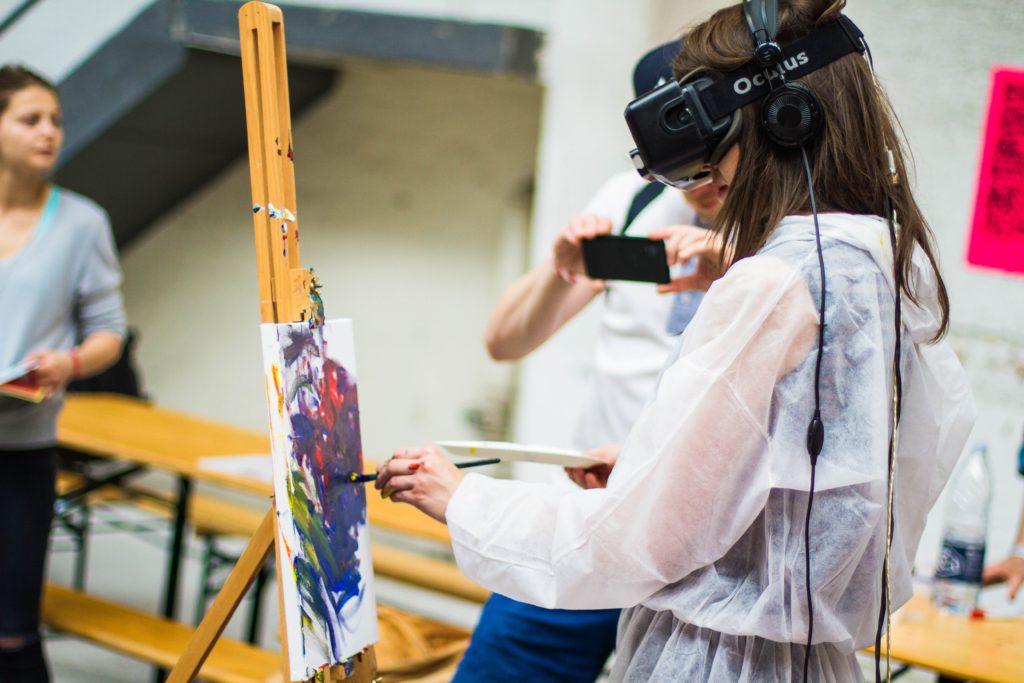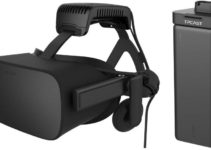What is Virtual Reality (VR)?
Imagine, you put on a pair of glasses and next thing … there’s a palms tree.. beautiful turquoise water and pure white sand as far as you can see… wait is that a pod of dolphins in the distance?? OK, you don’t exactly feel the warmth of the sun or smell the salty sea breeze, but you are there.. at least virtually. This is just the tip of the iceberg. For years athletes and military pilots have been using virtual reality to replicate situations in order to train better for the real world. It wasn’t until recently that this technology has been made available to the general public.
Lets define it VR
So far it sounds like something from a Science Fiction book, but what is it exactly? Virtual Reality is “a believable, interactive 3-D computer-created world that you can explore so you feel you really are there,both mentally and physically”. When you put the VR headset, you enter a computer simulated world that looks strikingly close to real life. You can spin a full 360 degrees and from what you can see be fully immersed in the computer simulated environment and completely shut out of the physical world surrounding you.
Here’s a couple words that make up the virtual reality experience –
- Believable: Looking around, you are not able to distinguish the difference between what you are seeing through a headset and the virtual reality you are in.
- Interactive: VR is 3-D. So when you turn around you will actually see what’s behind you in the simulation. You are playing virtual call of duty and as you shoot the tank, you can see it blow up.
- Explorable: You are not limited to the initial starting screen. You are able to move around and explore more of the virtual world that adapts to your movements.
VR created this completely believable virtual world of which can be completely explored. As you dive deeper into the simulation what you see reacts to your every movement. If you turn your head around, what you see, changes to match your new perspective from what would have just been behind you.
How does it work?

Now that we know what virtual reality is… How on earth does it work!?! We live in a world with 3 dimensions, thus this needs to be replicated in virtual reality. To make matters more difficult, it needs to be interactive and responsive to the environment.
During a virtual reality experience, a special headset is worn. You can think of these headsets as something that resembles snowboarding goggles, but instead of the lens there is a screen in front of your eyes to view this new world. This screen has built in sensors to watch eye movements, so that the world you are viewing can be rendered and adapted based on eye movement and positioning. It is important to have the maximum field of view (FOV) within the headset, which is 180 degrees.
As you move, the screen refreshes to parallel the environment you would be seeing. For this to feel seamless, the screen needs to refresh at 60 frames per second (FPS) -minimum. Two technical components determine the quality – The frame rate is the rate at which the GPU can process the images per second and screen refresh rate is the pace of the display to render images. Both need to work well for the optimal experience.
When the frame rate and refresh rate are not working in sync and at optimal levels, one can cybersickness, stemming from latency. An example could be from the screen refreshing at a faster rate than the user’s action or vise versa.
Experience enhancement
Now that we know how it works, how is the experience enhanced in order to make it even more real? We will now go over other pieces to the perfect virtual reality experience. The user needs to feel completely engrossed in the simulated world.
Sound
An equally important sense to tap into as sight, is sound. In tandem with the VR headset, the user wears a set of headphones that play audio synchronized with the visual representation of the virtual world. VR utilizes positional audio to create this experience. Basically that means at a particular point in the simulation certain user actions prompt the response of matching sounds. It is similar to what happens in the game call of duty. If you are running through the course and you jump and as you land there is a thud. The jump is followed by landing back on the ground, triggering a landing sound. Imagine if you jumped and as you landed you heard an airplane sound.This does not match and would be confusing.
Similarly in virtual reality a user’s actions are an important part in ensuring that the user feels fully immersed.
Eye, Head, and Motion Tracking
As briefly mentioned before, the screen of the VR headset tracks the movement of your eyes, motion, and head, then responds by showing an updated screen for that vantage point. This is vital to uphold the illusion of the virtual world the user is in. We will go over in-depth how each one of these enhances the user’s experience.
Head Tracking
The system uses six degrees of freedom, which plots the user’s head on a 3-dimensional axis to measure the head moving forward – backward, shoulder – shoulder, and the chin moving side – side(pitch, yaw, and roll). Your head is being tracked, so that the experience can adjust based on where you are looking. You rotate your head to the left and the screen now updates the headset screen to reflect it. This is done using sensors. Generally, there are three types of sensors in a headset used in tandem to attain the true six degrees of freedom – magnetometers, accelerometers and gyroscopes
Sensors
- Magnetometer – Using magnetic fields, the magnetometer replicates the technology from a compass to determine the cardinal direction you are facing via the headset.
- Accelerometers – (Usually several working together) Measures the orientation of the device in order to calculate the acceleration of the user. This is how it can be determined whether the user is standing still or running.
- Gyroscopes –Measures the angular velocity in movement. If the user rotates, then the gyroscope picks up on the orientation change and reflects it in the simulation.
Motion Tracking
Motion tracking is how you move your own body.In many cases, you will want to track hand movements, so you can see and use them in the simulation. This can be tracked with VR gloves. In addition to gloves, there are numerous types of devices, which usually depend on the virtual reality experience you are trying to have. Other complementary accessories include wireless controllers, joysticks, treadmills, and motion platforms.
Most popular accessories:
- Data Gloves – If the user is using a system that allows for data glove integration, then one can see and use hands in the simulation. One of the more popular gloves used is lined with fiber-optic cables that reach the tip of each finger. Tiny holes cover the gloves and each fingertip has a photocell, so as the person moves their fingers sensors track the amount of light that escaped in order to track the hand motions.
- Wands – Wands can be used to enhance the virtual world. This accessory is used mostly in games to simulate interactions where you need to point and or touch objects.
- Immersive rooms – A room where the walls project the simulation from the outside. This is how the military can create flight simulator (the prop plane is on the inside) or race car drivers can train for race day with VR. In these simulation types, the user usually wears stereo glasses to capture the 3-D perception rather than wearing a headset.
Eye Tracking
One of the most underdeveloped components in VR is Eye tracking. During the simulation the user’s eyes are tracked through an infrared sensor. As you move your pupils around, sensors pick up on where you are focusing on. This changes what is being displayed in the screen, so that where you are focusing on is reflected in the screen, otherwise everything would be in focused, making the subject highly susceptible to simulation sickness.
Screens
The screen is typically a Liquid Crystal Display (LCD) – what is used in flat screen televisions.Display screens are optimal when the view point is 180 degrees and can display a minimum of 100 degrees to still showcase the virtual environment. The headset displays a video feed on either a long panel like display or two separated displays for each eye. The lenses reshape the video feed by angling two 2D images to create depth perception. This creates the perception of a 3-D world.
Types of VR
Now we know how virtual reality works and what it is… Lets go over the different types.
Smartphone system
Most common are the smartphone VR systems. You need a modern smartphone that handle the VR apps that require immense processing power. Next, is the headset that can be as little as $10. If you would like to maximize the experience using a smartphone system, you can go for higher end headset models that range for roughly $80such as the Goggle daydream or Samsung Gear.
Fully immersive
Arguably one of the most real virtual experiences. Most often experience with a head-mounted display (HMD) with sensory gloves and sound integration. Alternatively, we could move around inside a room where the video feed is projected on the walls from the outside (immersion room) with speakers surrounding the room.
One of the most famous dedicated VR headsets for full immersion– The Oculus Rift, costs roughly$400. It is a specially designed virtual reality display that makes use of state-of-the-art display systems, optics and refresh rates to provide a high level of visual fidelity and an immersive, wide field of view.
Non-immersive
This type does not immerse the user within a different reality,but allows the person to view it from an ominous vantage point. This type of VR is very useful in some professions such as architecture or archeology. An example, could be an interior designer showing clients what their home could look like with specific designs or historian rebuilding past civilizations in order to see how they lived.
Collaborative
Imagine playing call of duty with many other people, but instead of holding a control and staring at a television screen, you have a VR headset and data gloves. There are other players in the game who are playing against you in real time. These type of collaborative games are likely going to be the largest market for consumers in the VR realm.
Use cases
Over the last 30 decades ago, the use cases for virtual reality have expanded substantially. It has grown from a concept cultivated by fantasy and imagination to a practical technology used in many faucets of life.The cult-like following behind this technology is growing as it becomes more advanced and new industries adopt ways to integrate it.
Education
Sometimes reading tutorials on how to do something does not translate 100% when it comes down to execution. There are not always second chances when it begins to training. When a brain surgeon does his first surgery,wouldn’t it be better if he had practiced virtually before? What about a pilot.Wouldn’t you feel safer if the pilot flying your plane had practiced in an aviation simulator before his first flight. Aviation simulators are able to replicate many scenarios that can cause complications on flights. Instead of reacting to a crisis in the moment for the first time, pilots are able to practice these situations hundreds of times to better prepare themselves in real time.
Architecture and interior design
Architects are now able to create visual models as they have been able to for the last several years. They are now able to walk through it virtually and see what it looks like before the building is executed. Have you ever been in a building and thought it seems very dark, naturally? Had this been designed with virtual reality, the amount of sun light going into the room and the overall lighting could have been simulated to prevent this from happening.
Architects and designers now have the ability to bring their designs to life and find problems areas that were not thought of when the modeling took place. They are now able to fix them before the design was executed.
Games and entertainment
From flight simulators to race-car games, VR has long hovered on the edges of the gaming One of the use cases that will have the largest direct impact on the public. For entertainment purposes people will now be able to simulate different games. You know that race car game in arcades? So 2019. You are now able to feel the acceleration in the race car as you move to first place in the game. The impact on how we game will forever change as this industry begins to scale and become more mainstream.
Can reality get more virtual?
The future is limitless. We have some of the worlds most technologically advanced focused on taking Virtual Reality to the next level. Google, Facebook, and Microsoft have been funneling billions of dollars in the past couple of years in order to improve the current technology. Everything as we know it will begin to change as we know it.
Have friends that cant make it to your wedding? Maybe they can experience it virtually.
Were there subjects you had trouble with in school? Experiencing it virtually can help you remember better.
The potential is endless. What is virtual reality today will look unfathomable to what is virtual reality is tomorrow. It’s impossible to imagine where this tech will take us, but the future looks bright and exciting.




No Responses